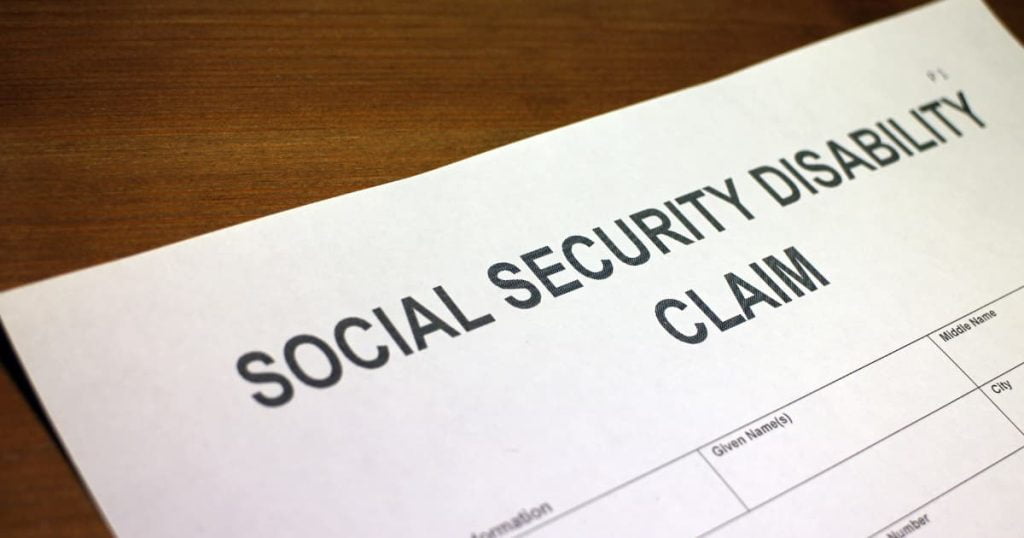As an individual living with a disability, or as a carer for someone who is, it’s crucial to understand the benefits and grants available in the UK. These provide financial support, helping to reduce the impact of additional costs related to disability. This guide will outline the key disability benefits and grants available, covering both children and adults.
Table of Contents
- 1. Disability Living Allowance (DLA) for Children
- 2. Personal Independence Payment (PIP)
- 3. Attendance Allowance
- 4. Carer’s Allowance
- 5. Universal Credit
- 6. Employment and Support Allowance (ESA)
- Frequently asked questions
1. Disability Living Allowance (DLA) for Children
DLA is a tax-free benefit for children under 16 to help with the extra costs caused by long-term ill health or a disability. It’s divided into two parts: the care component, which has three rates, and the mobility component, which has two rates. The rates received depend on the level of help your child needs.
Applying for DLA for Children

To apply for DLA for a child, you must be their parent or guardian and the child must:
- Be under 16.
- Have walking difficulties, or need more looking after than a child of the same age who doesn’t have a disability.
- Have had these difficulties for at least 3 months and expect them to last for at least 6 months (unless they’re terminally ill).
In Northern Ireland, you can apply online. In England, Scotland, and Wales, you need to download the DLA claim form from the UK Government’s website or call the DLA helpline to ask for a form.
If you need help completing benefit application forms, contact our office and one of our volunteers will help you.
Once you’ve filled in the form, send it to the address on the form. You’ll need to give information about how the child’s condition affects them.
Assessment of Activities for DLA Eligibility
The DLA assessment focuses on your child’s needs compared to a non-disabled child of the same age. The following activities and needs are often assessed:
- Mobility Needs: This is assessed based on whether your child can walk, how far, and if they require supervision or guidance when outdoors. Factors considered include balance, pace, coordination, and the risk of falls or seizures.
- Personal Care: This includes bathing, grooming, dressing, and toilet needs. The assessor will consider whether your child requires more help than others of the same age.
- Communication: This is assessed based on whether your child has difficulties in being understood by others, or in understanding others.
- Supervision: This includes whether your child needs continual supervision throughout the day to prevent substantial danger to themselves or others.
- Meal Preparation and Eating: Difficulty preparing a cooked main meal and the need for assistance with eating and drinking are assessed.
- Night Time Needs: This is assessed based on whether your child needs attention with bodily functions at night, or if they need continual supervision.
Special educational needs for learning can also be taken into account for the assessment.
Remember, the focus is not on the disability itself, but how the disability affects your child’s daily life. It’s important to provide as much detail as possible on the claim form about these everyday tasks and activities and any other ways your child’s disability impacts them.
Supporting documents such as Social Worker reports, Education Health and Care (EHC) plans or medical specialist letters can be used to support your claim.
2. Personal Independence Payment (PIP)

PIP has replaced the DLA for disabled adults aged 16 to state pension age. It’s designed to help with some of the extra costs caused by long-term disability, ill-health, or a mental health condition. PIP has two components: the daily living component and the mobility component, each with two rates (standard and enhanced). The maximum amount you received depends on how the condition affects you, not the condition itself.
Applying for PIP
To apply for PIP, you must be aged 16 to state pension age, have a long-term health condition or disability where you have had difficulties with daily living or getting around (or both) for 3 months, and expect these difficulties to continue for at least 9 months (unless you’re terminally ill with less than 6 months to live).
To initiate the application, call the Department for Work and Pensions (DWP) to start a new PIP claim. In Northern Ireland, contact the Northern Ireland Pension Centre. You will need your contact details, date of birth, National Insurance number, bank or building society details, doctor or health worker’s name, details of any time spent abroad, or in a care home or hospital when you call.
Once you’ve made the initial call, the DWP will send you a ‘How your disability affects you’ form. You’ll need to fill this in to explain how your health condition or disability affects your daily life, both on good and bad days, and over a range of activities. This is your chance to explain fully how your condition affects you, even if you’ve already sent a letter from your doctor or specialist.
Assessment of Activities for PIP Eligibility
The PIP assessment focuses on two main areas – daily living and mobility. The activities assessed are as follows:
- Daily Living Activities:
- Preparing food
- Eating and drinking
- Managing treatments
- Washing and bathing
- Managing toilet needs or incontinence
- Dressing and undressing
- Communicating verbally
- Reading and understanding written information
- Mixing with other people
- Making decisions about money
- Mobility Activities:
- Planning and following journeys
- Moving around
You will be awarded points based on your ability to carry out these activities. The more help you need, the more points you get. You need 8 points in total for the standard rate and 12 points for the enhanced rate in either component.
Remember, the focus is not on the disability itself, but how the disability affects your daily life. Be as thorough as possible when completing your form and during your assessment to ensure the assessor gets a complete picture of your day-to-day life and the challenges you face.
3. Attendance Allowance

Attendance Allowance is for individuals who are at state pension age or over and need help due to a disability or illness. To qualify, you must have needed help with your care or supervision for at least 6 months (unless you’re terminally ill).
Applying for Attendance Allowance
To apply, you’ll need to download and fill out the Attendance Allowance claim form (AA1A) from the UK Government’s website. The online form also includes detailed information about your illnesses, disabilities, and difficulties you face. You’ll need to provide detailed descriptions of what kind of help you need and how often.
Send the completed form to the address on the form. Along with the form, you can provide supporting evidence, such as a letter from a GP, consultant, social care provider or worker.
Assessment of Activities for Attendance Allowance Eligibility
Attendance Allowance doesn’t cover mobility needs, but it focuses on your care needs. It’s based on the help you need, not the help you actually get. The activities assessed include:
- Personal Care: This includes help or supervision you need with tasks like washing, dressing, eating, taking medication, or using the toilet.
- Supervision: This is to ensure your safety. If you need someone to watch over you to avoid putting yourself or others in substantial danger, this will be taken into account.
- Help with Communication: If you need assistance communicating, for example due to a hearing or speech impairment, this will be considered.
- Help with Mental Functions: This includes if you need encouragement or motivation to get out of bed, get dressed, or socialize, or if you need supervision because you’re confused or frequently forget things.
- Night Time Needs: If you require care or help during the night, such as help getting in or out of bed, going to the toilet, or if you need supervision.
The rate you get depends on the level of care that you need. You’ll get the lower rate if you need frequent help or constant supervision during the day, or supervision at night. The higher rate is for those who would benefit from help or supervision throughout both day and night, or those who are terminally ill.
Remember to be as detailed as possible when describing your difficulties and the help further support you need, as this will provide the assessors with a better understanding of your daily living needs.
4. Carer’s Allowance

Carer’s Allowance is for people who care for another individual for at least 35 hours a week. The person being cared for must receive certain benefits, such as PIP, DLA (the middle or highest care rate), or the Attendance Allowance.
Applying for Carer’s Allowance
To apply, you can fill in the claim form online on the UK Government’s website. If you prefer, you can also download the form and post it to the Carer’s Allowance Unit. You’ll need your National Insurance number, bank or building society details, employment details, and information about any expenses, for example, pension contributions or the cost of caring for your children or the disabled person while you’re at work.
Assessment of Activities for Carer’s Allowance Eligibility
Eligibility for Carer’s Allowance is not based on specific activities performed by the carer, but on the total amount of care provided and the benefits received by the person being cared for. Here are the key criteria:
- Hours of Care Provided: You must spend at least 35 hours a week caring for someone. This doesn’t have to be continuous; it can be spread throughout the week.
- Recipient’s Benefits: The person you care for must already receive a qualifying disability benefit. As mentioned, these include the DLA (middle or highest care rate), PIP, or Attendance Allowance.
- Earnings: As of the knowledge cutoff in September 2021, you can earn up to £128 a week (after taxes, care costs while you’re at work and 50% of what you pay into your pension) and still be eligible.
- Residency and National Insurance: You must be living in England, Scotland, or Wales for at least 2 of the last 3 years and not be in full-time education or studying for more than 21 hours a week. You must also not be subject to immigration control.
Do remember to consult the official UK government website or a benefits adviser for the most current information, as eligibility criteria and application processes can change.
5. Universal Credit

Universal Credit is a single payment that has replaced the payments for certain benefits and tax credits, including income-based Jobseeker’s Allowance (JSA), Housing Benefit, Child Tax Credit, Working Tax Credit, income-related Employment and Support Allowance (ESA), and Income Support.
Applying for Universal Credit
To apply, you need to submit a claim online through the UK Government’s website. It is means tested so your household income is taken into account. You’ll need to provide information such as your bank, building society, or credit union account details, an email address, your housing details (e.g., how much rent you pay), your income details (including from any work, pension, or other benefits), and savings and investments details.
If you have a health condition or disability that affects your ability to work, you might qualify for the Limited Capability for Work or Limited Capability for Work Related Activity elements of Universal Credit.
Assessment of Activities for LCW and LCWRA Eligibility
If you’re claiming Universal Credit because of a health condition or disability that affects how much you can work, you’ll be required to undergo a Work Capability Assessment (WCA). The WCA is used to determine the level of support you’re entitled to. It assesses the extent to which your illness or disability affects your ability to work.
The WCA assessment focuses on a range of physical and mental health activities, including:
- Physical Activities: These include moving around, standing and sitting, reaching, picking up and moving items, manual dexterity, making yourself understood, understanding communication, navigation, and maintaining control of bowels and bladder and remaining conscious during waking moments.
- Mental Health Activities: These include learning tasks, awareness of everyday hazards, starting and finishing tasks, coping with changes, getting about, coping with social engagement, and appropriateness of behaviour with others.
Depending on the assessment, you may be placed in one of two groups:
- Limited Capability for Work (LCW): You’re not fit for work but can prepare for work through activities like regular interviews with a work coach.
- Limited Capability for Work-Related Activity (LCWRA): You’re not fit for work or work-related activities. You’re not required to work or prepare for work, and you receive a higher rate of support.
Note: While undergoing the assessment phase (usually three months), you may be eligible for the basic Universal Credit rate with no additional amount.
As with all benefit claims, it’s crucial to provide as much detail as possible about your circumstances and how your health condition or disability affects your ability to work when undergoing the WCA.
6. Employment and Support Allowance (ESA)

Employment and Support Allowance (ESA) offers you financial help and support if you’re unable to work. You can apply for ESA if you’re employed, self-employed, unemployed, or a student on Disability Living Allowance or Personal Independence Payment. You must be under state pension age and not in full-time education to qualify.
Applying for Employment and Support Allowance (ESA)
To apply for ESA, you can call the contact centre or download and fill in the ESA1 form from the UK Government’s website. You will need your National Insurance number, medical certificate, GP’s address and phone number, mortgage or landlord details, employer’s address and telephone number, and bank account details.
Assessment of Activities for ESA Eligibility
To qualify for ESA, you generally need to have a Work Capability Assessment while your ESA claim is being processed. This assesses the extent of your illness or disability and how it affects your ability to work.
The assessment focuses on physical and mental health activities, including:
- Physical Activities: These include mobilising unaided, standing and sitting, reaching, picking up and moving objects, manual dexterity, making self-understood, understanding communication, navigation and maintaining control of bowels and bladder and remaining conscious during waking moments.
- Mental, cognitive and intellectual function assessments: These include learning tasks, awareness of everyday hazards, initiating and completing personal actions (which means planning, organisation, problem solving, prioritising or switching tasks), coping with change, getting about, coping with social engagement due to cognitive impairment or mental disorder, and propriety of behaviour with other people.
After the assessment, you’ll be placed in one of two groups if you’re entitled to ESA:
- Work-Related Activity Group: You’re able to get back into work with the right help and support. You’ll be expected to take part in work-focused interviews with your personal adviser.
- Support Group: Your illness or disability has a severe effect on your ability to work, and you’re not expected to take part in any work. You’ll receive a higher rate of ESA.
As with all benefits, it’s essential to provide as much detail as possible when describing your disability or health condition and how it impacts your daily life and ability to work.
Frequently asked questions
Can Disability Allowance be backdated?
Disability Living Allowance, Personal Independence Payment and Attendance Allowance are paid from the date you make the claim. Once an award is made, you may be able to backdate other benefits (or increases in benefits) such as Housing Support costs or a Council Tax reduction
Are disability benefits taxable?
Some disability-related benefits are taxable, some are not. Those that are taxable include Carer’s Allowance and (contribution based) ESA. Those that are not taxable include: Disability Living Allowance, Attendance Allowance, Universal Credit and Personal Independent Payment.
How much is DLA?
Benefit rates change every year. You can check the latest benefit rates on the Gov.UK website.
Think our post was useful? Please share it with others – sharing is caring!
